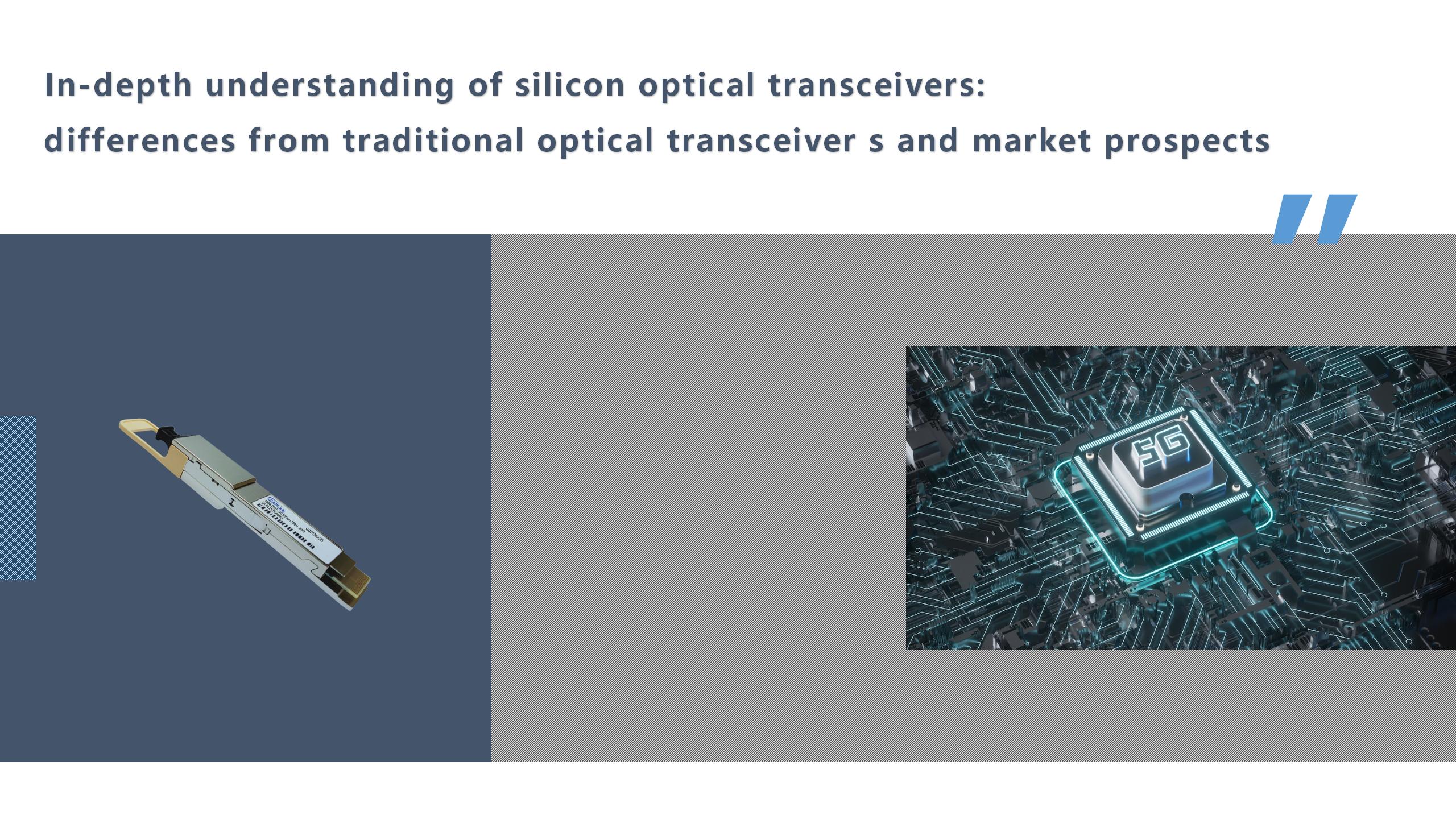With the advent of the 5G era and the development of technologies such as cloud computing, big data, and the Internet of Things, the optical communication industry has ushered in unprecedented development opportunities. As a new type of optoelectronic device, silicon optical transceivers have attracted the attention of the industry. This article will discuss in depth from three aspects: the difference between silicon optical transceiver s and traditional optical transceivers, market prospects and application fields.
Traditional optical transceivers are composed of optoelectronic devices, functional circuits and optical interfaces. The silicon optical transceiver is an optoelectronic device made of silicon-based materials. It is based on silicon monolithic integration technology and integrates optical devices to form a powerful optical communication system.
Compared with traditional optical transceivers, silicon optical transceivers have the following differences:
Different materials
Traditional optical transceivers are usually made of compound semiconductor materials such as GaN and InP, while silicon optical transceivers are made of silicon-based materials.
More mature technology
Due to the development of silicon integrated circuit technology, silicon photonics technology has become more mature, and its reliability and stability are higher.
Lower cost
Silicon optical transceivers use silicon-based materials and utilize CMOS technology, and the cost is much lower than traditional optical transceivers.
According to the "2021-2025 In-Depth Market Research and Investment Strategy Suggestion Report on the Silicon Optical transceiver Industry", it is estimated that the market size of silicon optical transceiver s will reach about US$5.8 billion by 2025. At present, silicon optical transceiver s have been widely used in data communication, smart phones, optical fiber communication and other fields. In addition, silicon optical transceiver s also have the following market prospects:
Cloud Computing Field
Cloud computing is the core technology in the era of big data. During its development, the scale and bandwidth requirements of data centers have grown rapidly. Silicon optical transceiver s just meet the requirements of such applications, so they have broad application prospects in the field of cloud computing.
AI chip
The rapid development of artificial intelligence has promoted the demand for AI chips. In the AI chip, the silicon optical transceiver can give full play to its advantages of high integration, high data processing capability and low cost, and is expected to become an important part of the AI chip.
Autonomous driving
Autonomous driving technology relies on high-speed, high-bandwidth data communication, and silicon optical transceiver s can meet this demand. They can not only provide more efficient and secure data transmission, but also realize the Internet of Vehicles and further improve the intelligence of vehicles.
Data communication
In the field of data communication, silicon optical transceiver s can be applied to optical fiber communication of various transmission rates, data centers and cloud computing, because of their low cost, low power consumption, high reliability and easy integration, etc. The need for low latency and reliable communication.
Smartphone
As smartphones become more powerful, people are demanding higher data transmission and computing speeds. The application of silicon optical transceiver s can effectively improve the data transmission speed and computing power of smartphones, while reducing power consumption and improving battery life.
Autonomous driving
Autonomous driving technology is another application field of silicon optical transceiver s. Silicon optical transceiver s can realize high-speed and stable data transmission and reception between in-vehicle devices, between in-vehicle devices and urban infrastructure, and between vehicles, thereby realizing the realization of autonomous driving technology.
To sum up, silicon optical transceiver s have many advantages such as low cost, low power consumption, high reliability, easy integration and customization, and have broad application prospects. We believe that with the advent of the 5G era, silicon optical transceiver s will surely promote the development of the optical communication industry and bring more convenience to people's lives.


